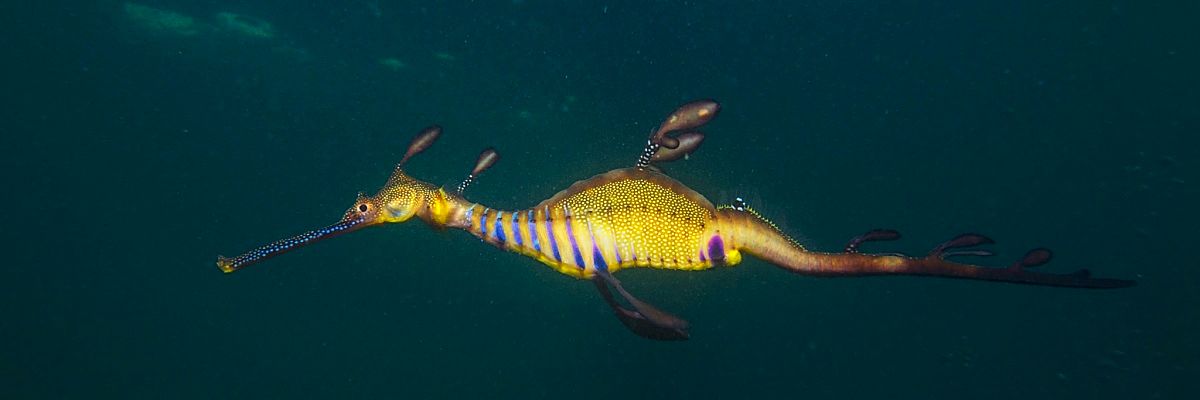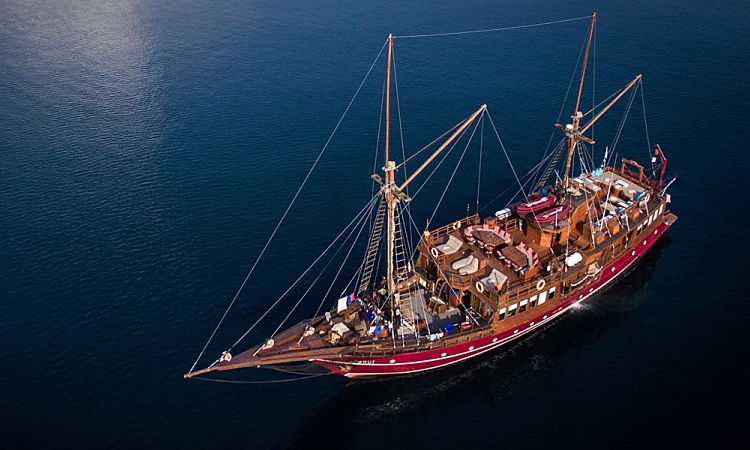
To help you plan your trip, we’ve prepared a list of basic information you’ll want to know before you book. Once your trip has been reserved, you’ll receive pre-departure information with all the details you need for your adventure.
For liveaboard diving trips from Cairns (Spoilsport & Spirit of Freedom) your international flights can be scheduled to Sydney and then a domestic flight to Cairns … OR, in some instances, directly to Cairns. Spoilsport & Spirit of Freedom leave from the harbor at Cairns.
For Great White Shark diving with Rodney Fox, you’ll want to fly to Sydney, then Adelaide (from some destinations, a direct flight to Adelaide is possible) then take a Regional Express (a short 40-minute flight) to Port Lincoln on the Eyre Peninsula in South Australia. Bus service is also available from Adelaide … or you can undertake the approximately 7-hour drive, if you’re up for the adventure.
Visas for entering Australia depend on your nationality. To find out if you require a visa to enter Australia, visit the Australia Government Department of Immigration website. The citizens of some countries are eligible for an ETA (Electronic Travel Authority) as an alternative to a visa. To find out if you are eligible for the ETA visit www.eta.immi.gov.au.
For Mike Ball Dive Expeditions, you will make your own way from the airport to their office in Cairns for check in for your expedition. After your expedition you will be transferred either to the office, or the airport or any inner city hotel.
Spirit of Freedom offers return courtesy transfers from all Cairns city hotels. If you are staying outside the central district, or at the Northern Beaches suburbs, you will need to arrange your own transfers. Airport pick-ups are not included but they will drop you at the airport after your Spirit of Freedom trip, if you choose.
Rodney Fox Expeditions will meet guests at the Marina Hotel in Port Lincoln 15 minutes before boarding.
Australian seasons are, of course, opposite those of the northern hemisphere. Summer is December through February and winter is June through August.
Northern Australia
North Queensland is tropical, so rain is not uncommon between December and April. While monsoonal troughs can descend at this time, the areas offshore and further north of Cairns are less prone to the tropical rains. If dangerous weather is forecast, trips will be cancelled. Please ensure that you are properly insured.
May to December is known as the dry season, with less humidity and generally clear sunny days. The finest time for Coral Sea trips is from September to January.
May through August is mostly sunny and clear of rain, although the south-easterly trade winds can be a bit stronger at this time. Air temperatures range from 15°C/ 60°F to around 26°C/ 79°F.
September through to December is typically clear sunny days and light winds. April to October, the air temperature ranges from 20-32°C (68-90°F). January through April is a wetter season and the air temperature ranges from 23-32°C (74-90°F)
Southern Australia (Great Whites at Neptune Islands)
The brightest sunniest weather at the Neptune Islands is usually experienced between the months of October and April.
Northern Australia
Water temperatures range from 24°C/75°F in the winter, peaking at 30°C/ 86°F in the summer, while maximum air temperatures range from 24°C/75°F to 32°C/90°F.
May through August water temperatures will be at their coolest but generally with great visability. September through to December sees the water warm up, and many coral reef species breed at this time, with the coral spawning en-masse in October and/or November. From April to October, the water temperature usually averages 27°C/80°F.
January through April brings tropical monsoon weather and amazing marine action, plus a great opportunity to see juvenile fish following the breeding season. The water temperature averages 29°c/84°F.
Southern Australia
The warmest water temperatures for the Neptune Islands are found between December and May when water temperatures rise to 18-19 C.
Offshore currents flowing past the Neptune islands maintain water temperatures above 15C throughout most of the year with the lowest temperatures in early Spring.
Virtually all northern Australian itineraries are in isolated, remote areas and include diving in open water exposed to wind, swell, and currents. Sheltered calm water suitable for ‘easy’ diving is not available.
For the Great Whites, no diving experience required. This is surface cage diving or viewing the sharks topside from the boat. There are qualified dive professionals onboard who look after everyone, including non-divers. For the ocean floor cage diving, the cages descend 20 metres (66ft) and participants must be certified divers.
In the north, you can take your pick of seasons, depending on what you want to see.
For shark diving in the south, the early summer period and late autumn/early winter generally offers the most reliable shark sightings. The very largest sharks seen are usually mature female sharks which can measure over 5m long. These super-giants are more likely to be encouontered in late autumn and winter with maximum-sized super giants peaking in the winter months. June to August tends to offer the larger males who are consistently more “photogenic” than the typically more cautious giant females.
Generally, the minimum level is Open Water Diver, with at least 10 ocean dives including 5 dives in the last 12 months. However, for the Coral Sea trips, the minimum certification level is Advanced Open Water Diver, with 20 ocean dives including 5 dives within the last 12 months and a good level of physical fitness. For your safety, your diving may be limited if your experience, physical fitness, or skills do not match our dive site conditions.
We recommend Lycra skin of 3mm in the summer (October – March) and 5mm in the winter (April – September). Vests and hoods are recommended to bring for extra warmth if you are not sure. It’s recommended, also, that you bring your own personal toiletries & personal medication, swimming costume, hat, sunscreen, sunglasses, sweater and sweat pants / light weight pants and tops for the evening are a good idea.
If you’ve chosen an itinerary with flights between Lizard Island and Cairns are at an altitude of 200 to 300 metres and are safe to do after diving (they do not exceed the ‘600 metre’ ‘Flying after Diving’ ceiling). For your onward commercial flight however we recommend maintaining a 24 hour interval before you fly. The last dive on offer is completed at approximately 4pm however you should finish your diving earlier if needed based on your onward flight.
Currency used is the Australian Dollar.
We strongly advise our guests to obtain comprehensive travel insurance to cover against unforeseeable events including personal & business impediments, illness, travel delays and missed flight connections. We can recommend excellent and inexpensive insurance options which will cover virtually every scenario.
Please don’t allow yourself to be one of the unfortunate travelers who are without coverage for unexpected circumstances. Insurance is a small slice of the pie in terms of overall travel costs and can save you from serious financial losses.
Diving insurance is required by a growing number of liveaboards. Do not confuse regular travel medical and/or travel insurance with diving-specific insurance such as DAN (Divers Alert Network) or Dive Assure. This type of insurance will cover all of your scuba diving and snorkeling activities, including the costs for recompression chamber treatment and emergency air evacuation. These are not covered by the average travel insurance.
Dive Assure can set you up with a travel insurance plan which includes general travel insurance, including trip cancellation …. plus full dive coverage. Click on the button below to access Dive Assure directly.
Our tailor made Liveaboard Finder. It’s the easiest way to see the best offers, check availability in different destinations and get diving quickly!

Our biggest strength is our direct contact with diving enthusiasts. Anything unclear? Get in touch:
Our call us directly on:
We are happy to take your call either in English or German.
Subscribe to our Newsletter to stay tuned:
Stay adventurous, follow us!